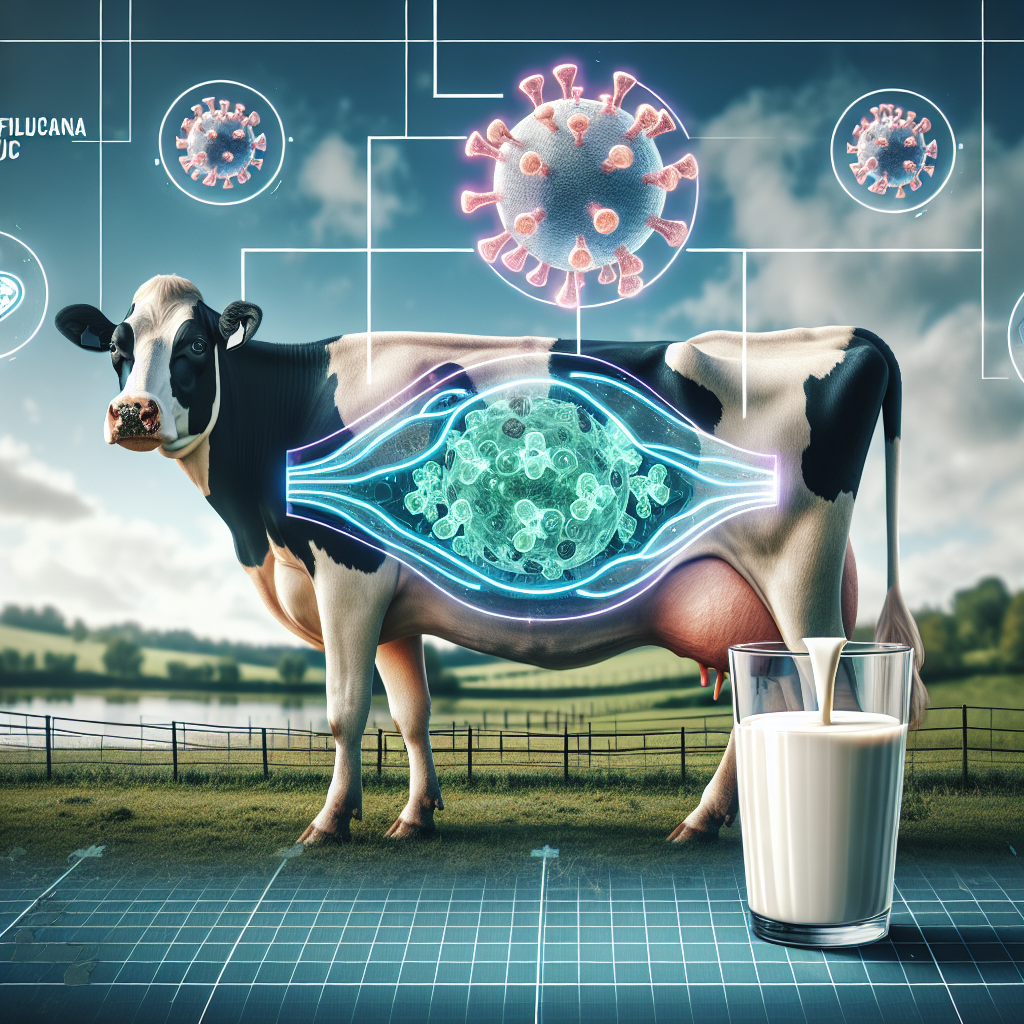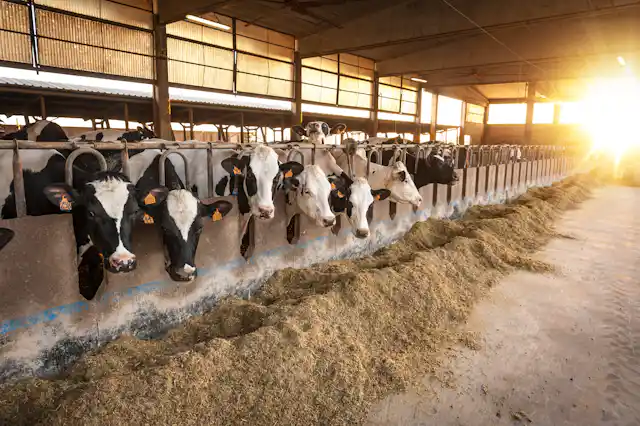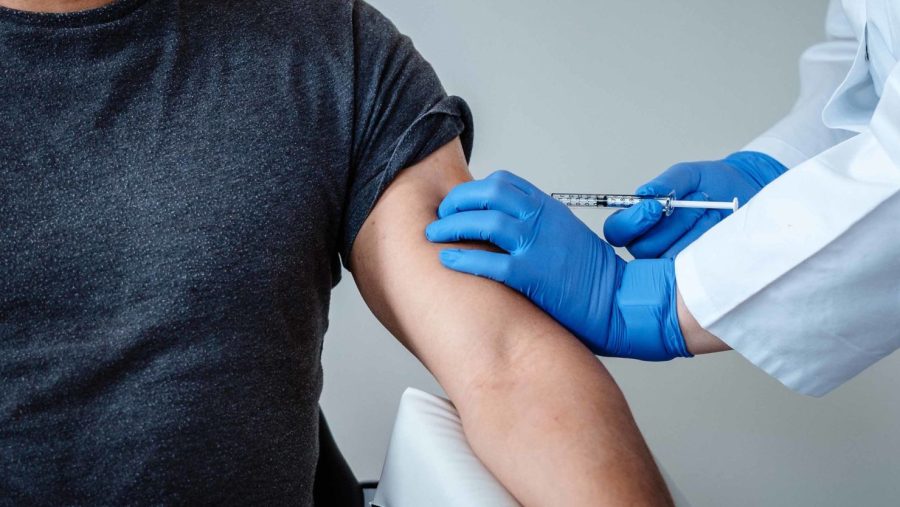Find out how sialic acid in dairy cows’ mammary glands makes them targets for influenza. Discover why pasteurization is vital and the dangers of drinking raw milk.

Consider a sugar molecule on dairy cow mammary glands that reveals the cause of a viral problem. This chemical, sialic acid, is a receptor for influenza viruses, allowing infection. The latest highly pathogenic avian influenza (HPAI) epidemic has far-reaching ramifications for dairy cows. Sialic acid in bovine mammary glands may bond with influenza viruses from birds, people, and pigs, threatening catastrophic mutations and emphasizing the critical need for improved biosecurity on dairy farms. Before the HPAI pandemic, there was little study on sialic acid levels in cow mammary glands. The epidemic has infected approximately 97 million birds in the United States and endangers dairy cattle. Understanding how these viruses interact with mammalian hosts is crucial for improving livestock and public health measures. This problem influences the dairy industry’s economic stability.
The Unseen Susceptibility: Sialic Acid’s Dual Role in Dairy Cows
Sialic acid is a complex sugar molecule present on the surfaces of many animal cells, including dairy cows. It is essential for both cell-to-cell communication and protein protection. However, sialic acid makes cells more vulnerable to influenza because viruses use it as a receptor to enter cells. This step allows the virus to insert its genetic material and initiate an infection. Sialic acid is found in several organs in dairy cows, including the mammary glands, which explains how influenza may impair milk production and health. Understanding this may help dairy producers identify flu risks and take preventative steps.
Sialic Acid: The Flu Virus’s ‘Key’ to Dairy Cow Cells
Iowa State University researchers have detected a substantial amount of sialic acid in the mammary glands of sick dairy cows. This research demonstrates how influenza viruses bind to and infiltrate these cells. Sialic acid is crucial to the flu virus, opening the cell’s entrance and allowing infection. Understanding this process helps us better understand how the virus spreads, opening the path for solutions to safeguard our herds.
The New Vulnerabilities in Dairy Farming
These discoveries have significant consequences for dairy cattle. Researchers have discovered the presence of sialic acid in mammary glands, which makes them potential hotspots for influenza virus attachment and infection. This shows that dairy cows may be more sensitive to influenza.
Essentially, sialic acid in the mammary glands is a magnet for the flu virus. When influenza viruses from birds, people, or pigs come into contact with these cells, they are more likely to adhere to and infect the cow.
This increased vulnerability may lead to further illnesses, complicating attempts to maintain healthy herds. This is cause for alarm among dairy producers. If cows are more likely to have the flu, it may impact milk output, animal welfare, and overall herd health.
Understanding and minimizing this risk is critical. Improved biosecurity, frequent health monitoring, and exploring immunization possibilities are essential to safeguard cows and their milk.
Pasteurization: The Unquestionable Shield Against Viral Contamination in Dairy
Beyond the debates over dairy production and virus infections, pasteurization is an essential public health precaution. This method, which includes heating milk to a specified temperature for a given time, successfully kills hazardous organisms such as bacteria and viruses like influenza. Pasteurization is not just an excellent choice but a requirement for protecting customers from the health risks associated with raw milk. The regulated use of heat kills germs that might otherwise grow in raw milk, ensuring that the finished product is devoid of infectious agents.
Understanding the biological affinity of dairy cows’ mammary glands for influenza viruses highlights the need for pasteurization. Raw milk might become a viral conduit without this intervention, causing serious consumer concerns. Pasteurization reduces these risks by ensuring the finished product is safe for human consumption despite dairy cows’ inherent sensitivity to virus infections.
Pasteurization is a significant public health intervention in addition to ensuring immediate milk safety. Eliminating the hazards of raw milk avoids infectious diseases caused by viral and bacterial contamination. Understanding that pasteurization provides a solid barrier to viral transmission improves monitoring and discard methods for milk from affected cows. While the temptation of raw milk may endure, data confirming pasteurization’s success in protecting public health emphasizes its need.
Ensuring Safety: Protocols for Handling Milk from Infected Cows
Infected milk from cows with influenza viruses is subjected to stringent procedures to avoid viral propagation. Infected animals are promptly quarantined to prevent the infection from spreading. Milk from these animals does not enter the commercial supply chain. Instead, the material is treated at high temperatures or disposed of under veterinarian supervision. These treatments neutralize the virus, avoiding environmental contamination and protecting other animals and people.
The significance of these measurements cannot be emphasized. Removing virus particles from milk protects public health and avoids zoonotic transmission via dairy intake. Adherence to these procedures also helps to preserve the food supply chain’s integrity, which boosts customer trust in dairy products. These containment and disposal solutions demonstrate the dairy industry’s dedication to food safety and proactive response to viral risks.
Understanding Species-Specific Responses to HPAI Outbreaks
The varying effects of Highly Pathogenic Avian Influenza (HPAI) on different animals demonstrate the virus’s varied pathogenicity. HPAI is fatal in birds, resulting in catastrophic losses and the killing of millions to stop its spread. Over 97 million birds in the United States alone have been impacted, creating significant economic disruption. In contrast, HPAI in dairy cows seldom causes significant death rates. However, it does represent a concern due to viral mutation and interspecies transmission. While the immediate mortality risk for dairy cows has decreased, constant monitoring and strict biosecurity precautions are still required. The HPAI epidemic highlights the need for species-specific responses, with chicken businesses facing large-scale culling and dairy farms concentrating on avoiding viral reservoirs.
The Genetic Roulette: Reassortment Risks in Dairy Cows Harboring Influenza Viruses
Both avian and mammalian influenza receptors in dairy cows pose significant hazards owing to the possibility of virus reassortment. When both virus types infect cells, their genomes may combine, resulting in new hybrid strains. This genetic reassortment may produce viruses with greater virulence, a different host range, or resistance to existing therapies and vaccines. These alterations might result in the formation of a deadly influenza strain, presenting a significant public health risk. Continued study is critical for identifying and mitigating these dangers, providing proactive animal and human safety.
The Broader Horizon: Investigating Influenza Receptors Across Species
The ramifications of these discoveries are considerable, emphasizing the critical need for more study. A top priority should be discovering and analyzing influenza receptors in many animals and organs. By studying receptors in various animals, including cats, pigs, and wildlife, researchers may understand how influenza viruses traverse species boundaries. Examining sialic acid levels in diverse organs within these species might reveal novel viral targets, allowing for more effective containment techniques.
Furthermore, measures for monitoring and managing influenza threats in the dairy and other agricultural sectors are critical. This entails developing rigorous screening procedures to identify livestock and human workers early and avoid epidemics. Advanced genomic technologies will be essential in detecting viral alterations and reassortment processes, paving the way for vaccines and antiviral therapies customized to individual strains.
These findings are more than just academic; they represent a proactive response to developing infectious illnesses. Each finding takes us closer to implementing practical methods to reduce influenza spread while safeguarding the agricultural economy and public health. Investing in such research reflects our commitment to preventing and minimizing future biological dangers.
The Bottom Line
Influenza’s interaction with dairy cows, mainly owing to sialic acid in their mammary glands, demonstrates the critical relationship between animal health and virology. Sialic acid functions as a receptor, making cows more vulnerable, particularly during the current HPAI epidemic. This finding highlights the primary routes viruses use, highlighting the possibility of numerous flu strains in dairy cows. Pasteurization is a critical barrier against virus contamination in milk. Furthermore, tight guidelines for removing milk from diseased cows are required to maintain consumer safety. The severe effect of HPAI in birds, in contrast to its controllable but worrisome prevalence in cows, highlights research gaps and the necessity for extensive surveillance. The discovery of receptors for avian and mammalian flu strains in dairy cows necessitates continuous investigation. Expanding this to other animals might give more epidemiological information and boost our defenses. Virology, agriculture, and public health interact here, demanding ongoing scientific study and preventative actions. Our agriculture methods must change to safeguard animal health and consumer safety. Investing in preventative solid techniques is critical for reducing current and upcoming influenza strain threats.
Key Takeaways:
- Dairy cows are highly susceptible to influenza due to the presence of sialic acid on their cells, which acts as a receptor for the virus.
- The recent HPAI outbreak has drawn attention to the need for research on sialic acid levels in the mammary glands of cattle.
- Iowa State researchers found a rich supply of sialic acid in mammary gland samples from infected cows, highlighting a new area of vulnerability.
- Pasteurization remains effective in neutralizing influenza viruses in milk, assuring that commercially sold milk is safe for consumption.
- The presence of influenza receptors for bird, human, and pig strains in dairy cows heightens the risk of dangerous viral mutations.
- Further research is needed to explore influenza receptors in other species and organs, offering insights that could lead to broader preventive strategies.
Summary:
The highly pathogenic avian influenza (HPAI) epidemic poses a significant threat to dairy cows due to sialic acid, a complex sugar molecule found in animal cells, bonding with influenza viruses from birds, people, and pigs. This highlights the need for improved biosecurity on dairy farms and the impact of the virus on the dairy industry’s economic stability. Sialic acid is essential for cell-to-cell communication and protein protection but makes cells more vulnerable to influenza due to its role as a receptor for entering cells. It is found in several organs in dairy cows, including the mammary glands, which may impair milk production and health. Understanding this can help dairy producers identify flu risks and take preventative measures. Iowa State University researchers have detected sialic acid in the mammary glands of sick dairy cows, demonstrating how influenza viruses bind to and infiltrate these cells. Pasteurization is an essential public health precaution, as it kills hazardous organisms and ensures the finished product is safe for human consumption. Investing in research is crucial for identifying and mitigating these dangers and providing proactive animal and human safety. Advanced genomic technologies will be essential in detecting viral alterations and reassortment processes, paving the way for vaccines and antiviral therapies customized to individual strains.














